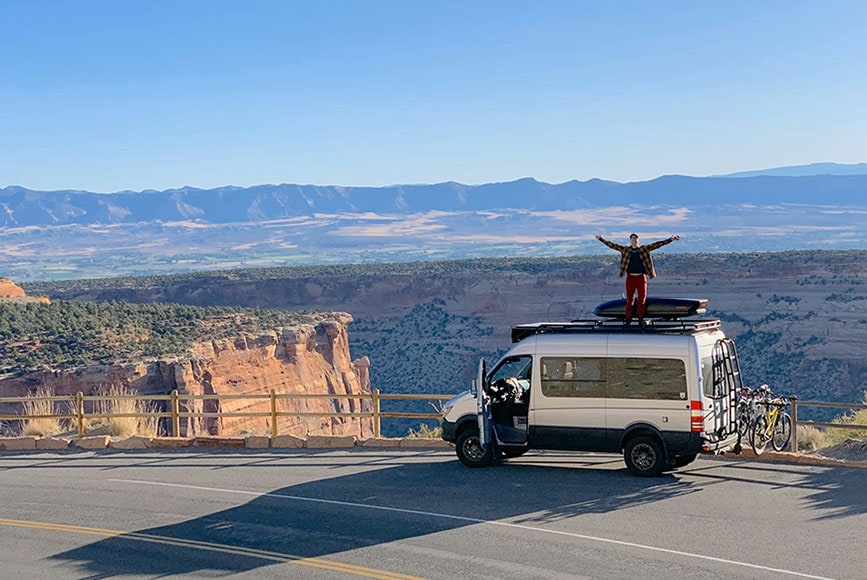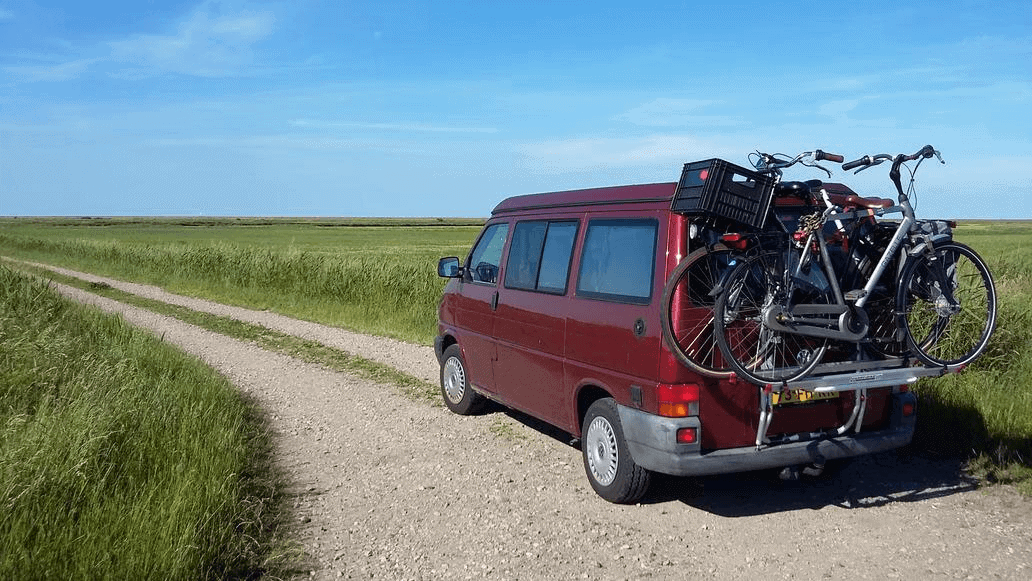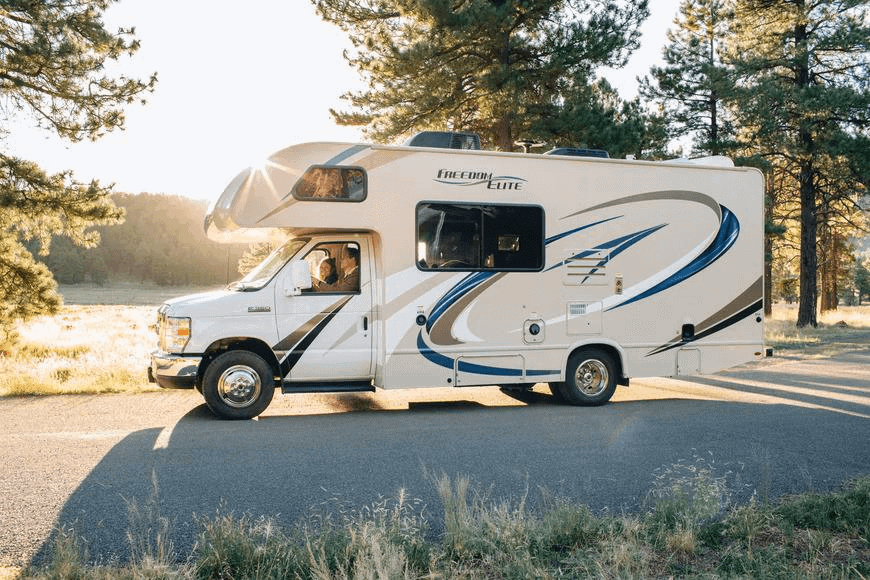Torn between a Class B RV vs. a Class C RV? Undecided which one best fits your needs? Without a doubt, this is one of the trickiest decisions aspiring RV owners have to make. So, which one among these popular wheeled homes makes more sense to you?
We’ve compiled all the information you need regarding Class B and Class C RVs, including the key differences, what each one has to offer, as well as the pros and cons. Hopefully, this post will help you make a more informed choice and ensure you get the camper you need and deserve.
What is a Class B RV?

Popularly known as camper vans, sleeper vans, or even adventure vans, Class B RVs are motorhomes built on a van chassis. They are the smallest of all motorhome types, making them easy to maneuver on congested or narrow roads and great for fitting into nearly any campground or parking spot. Despite their compact profile, they pack plenty of features on the inside.
Class B RV Size
Class B motorhomes typically measure between 17 to 24 feet long. Their standard width matches that of other road vans, which is around 7 feet. Regarding height, they can be as tall as 9 to 10 feet if they have a raised roof or as short as 7 feet for a low roof van. The average interior height of a Class B motorhome is just above 6 feet. They have a dry weight of between 4,000 and 11,000 pounds.
Class B RV Sleeping Capacity
The average Class B rig sleeps between 2 and 4 people. That’s not to say you can’t find a Class C with space for more than 4 sleepers. Generally, most of the additional Class B sleeping areas aren’t dedicated. It could be a lounge or dinette that converts into a bed in the evening.
Class B Motorhome Comfort
Just like the bigger RVs, B-Class motorhomes allow you to enjoy the outdoors with the added amenities of home. Apart from basics such as a bed, kitchen, and dinette, many are also equipped with climate control, hot water heaters, and premium entertainment systems. Still, not all come with bathrooms, and those that do come with smaller wet baths.
Class B Motorhome Living Space
Modern Class Bs have very functional design elements, with dual space use and cleverly planned equipment placement. However, there is still a limited amount of room to stretch as the available space is already packed with equipment. Therefore, it isn’t a suitable option for larger groups.
Storage Space
Since these rigs are tiny, the amount of storage space you get isn’t that great. Limited storage can be found overhead, and below the kitchen counter. You can also carry bulky gear on the roof rack. Many camper van owners expand the space by adding hanging wall organizers, shelves, hooks, and baskets.
Fuel Consumption of a Class B RV
Of all driveable RVs, Class Bs are the best in fuel economy. These RVs get around 15 to 18 miles per gallon on average. Some, especially the newer and more efficient models, can even achieve 22 miles per gallon. They excel in this department because they are lighter and have a more aerodynamic build.
Price
Class B RVs might be the smallest motorhomes, but they come with quite a hefty price tag. Expect to pay around $50,000 for a basic camper van and all the way up to $250,000 for a more luxurious B-Class. They cost more because building them requires more time, costly materials, and highly skilled labor.
Pros of a Class B RV
Below are the main benefits of owning a Class B RV:
● Easy to Drive and Park – Thanks to their nimble frame, camper vans are super easy to drive, back up, and park. They can also easily navigate narrow roads and congested streets and go off the beaten track.
● Excellent Gas Mileage – Class B campers offer great fuel efficiency compared to their larger and heavier cousins. The latest models come with aerodynamic shapes, allowing them to slice through the air with less drag.
● Route Planning is Easier – Thanks to their compact size, B-Class motorhomes don’t limit you when it comes to route planning. They can handle winding roads pretty well, and height clearance isn’t a major concern, as the van can go under most bridges and tunnels.
● Great for National Park Camping – Unlike their larger compatriots, Class B RVs fall within the length requirements of most national parks. You can park them in an average parking spot and navigate through the twisty park roads.
● Intelligent Use of Space – Every square inch of space in a Class B is cleverly utilized. Most amenities serve a dual purpose, from dinettes transforming into beds, countertops turning into tables, to sink faucets becoming showerheads.
● Easier to Maintain – Many camper vans can be serviced by most van mechanics. That’s because their engines and other vehicle systems are similar to those of any other van on the road. For bigger RVs, you need to go to an RV-specific shop.
● Storage isn’t a Big Problem – A camper van can be parked at home without raising eyebrows. It can fit inside a standard two-car garage or in the backyard.
● They are the Safest RVs – Class Bs are touted as the safest RVs because they have features like stability control, front and side airbags, plus full seat belts for multiple passengers. Additionally, their chassis are subject to crash testing by the National Highway Traffic Safety Administration (NHTSA). You are also most likely to benefit from built-in safety technology like lane-keeping and backup cameras if you choose a Class B with a Mercedes or Dodge frame.
● You’ll be More Active – Another benefit that often goes unnoticed is the fact that camper vans make you more active outdoors. And not just because they can access more remote areas. It’s mainly because they don’t offer too many interior luxuries that could make you want to stay indoors longer. With fewer pleasures on board, you’ll be compelled to seek entertainment outdoors.
● More Uses – When it’s not camping season, Class Bs can serve other purposes since it’s easier to take them out more often than a larger motorhome. You can use it for tailgating, day trips, sporting events, entertaining clients, or even running errands as a second vehicle.
Cons of Class B RVs

Here are the main drawbacks of owning a B-Class RV:
● Tight Interior Space – Of course, these campers offer little room to stretch as the available space is already chock-full of amenities. This is a deal-breaker for large groups or people who want to spend a ton of time inside.
● Lack of Dedicated Beds – Many camper vans have seating areas that convert into beds, so you usually have to make the bed each night and take it down in the morning or when you want seating space.
● Tiny Bathrooms – To save space, Class Bs come with tiny bathrooms that big people may not appreciate. Many offer a shower and toilet in a small closet, while some only come with a toilet.
● Appliances are Small – Although camper vans do a great job fitting the most basic equipment on board, most of their appliances come in small sizes. For instance, you’ll get a small fridge and stove.
● Quite Pricey – Don’t assume you’ll save if you go for the compact Class B motorhome. Despite the size, the average Class B RV is more expensive than a Class C RV. In fact, they have a higher cost per square foot compared with other RVs.
Most Suitable Crowd
So, who should buy a Class B RV? Camper vans are a more compelling option for solo nomads, traveling couples, or small families who aren’t bothered about space. Minimalists may also find them appealing as they don’t have wasteful features, just the necessities. They’re also ideal for dry camping enthusiasts, as their small size and length can access areas many other rigs can’t go.
Now let’s take a deep dive into Class C motorhomes.
What is a Class C RV?

A Class C RV is a driveable recreational vehicle built on a truck chassis and recognizable by an over-cab sleeping/storage area. It lands somewhere between the nimble camper van and a giant Class A. Basically, it combines the best features of Class As and Bs. Keep reading to learn what to expect from a C-Class.
Class C RV Size
The average size of a Class C RV is 28 to 33 feet, from the front bumper to the rear bumper. Smaller versions measure under 25 feet long, while the bigger ones can be as long as 40 feet. They are typically 8 and a half feet wide and 10 feet high. Most have ample headroom for even the tallest folks. Their dry weight falls between 10,000 and 20,000 pounds.
Class C RV Sleeping Capacity
C-Class motorhomes typically accommodate anywhere from 4 to 8 people. But this, of course, depends on the size of the rig and the layout you pick. They come with dedicated sleeping areas that may be separated for privacy, bunk beds, as well as dinettes/lounges that can double as beds.
Class C Motorhome Comfort
Class C campers offer a few more amenities than a Class B and plenty of room to spread out, making them more comfortable to live in. They typically have a permanent queen-size bed, a well-equipped kitchen, a dedicated eating space, and a full bathroom. You’ll also find an AC, furnace, water heater, entertainment systems, and awning.
Class C Motorhome Living Space
The spacious interior of a Class C allows you to not only stretch out during travel, but also enjoy privacy, especially if you pick a layout with a separate bedroom. You can also find C-Class models that have slide-outs to expand the exterior room when at the campsite. This makes it a suitable option for bigger families.
Storage Space
Ample storage space can be found throughout a Class C, so you don’t need to leave behind your camping gear and other extras you need to enjoy the trip. You’ll find generous storage overhead and in multiple cabinets and cubbies. Most feature an inbuilt wardrobe, pantry, and several storage compartments outside.
Fuel Consumption of a Class C RV
When it comes to fuel economy, Class Cs are somewhere in the middle between Class A and B motorhomes. You can expect them to get around 10 to 14 miles per gallon, depending on the size, weight, and engine type.
Price
So, how much does a Class C RV cost? The beauty of Class Cs is that they have the lowest price of all motorhomes. On average, a new Class C will set you back by $50,000 to 100,000. If you opt for the larger, high-end versions, expect to part with more than $150,000.
Pros of a Class C RV
Here are the main advantages of owning a Class C RV:
● More Living Space – Compared to camper vans, Class C features more spacious interiors for you to relax in. Some have slide outs that greatly expand the living space. You’ll also enjoy having a bigger bathroom with a separate shower and toilet.
● Sleep More People – They have multiple sleeping arrangements, including a bunk-over cab, which allows them to accommodate more people.
● More Features – Thanks to the extra room on the inside, Class Cs are fitted with more appliances that are the same size as those found in homes. They also offer plenty of storage space indoors and outside.
● You can Tow a Second Vehicle – Class Cs have a larger engine, so they can be used to tow a toad behind it. Toads allow you to explore places the larger motorhome can’t go and run errands away from the campground without worrying about fuel consumption. You can also use the Class C to tow a boat, motorcycle, or ATV.
● A More Economical Option – These motorhomes are the most affordable, making them an attractive option to those on a tight budget.
● Bigger Holding Tanks – Unlike a camper van, a Class C has a larger fresh, black, and gray water tank—an exciting feature if you prefer boondocking.
● Better Head Room – The ceiling height of these motorhomes is friendlier for tall people when compared to the space shorter vans offer.
Cons of a Class C RV

Here are the top downsides of a C-Class motorhome:
● Finding Parking isn’t as Straightforward – Compared to camper vans, finding a parking spot for a Class C isn’t easy as they don’t fit in standard spots.
● Not as Easy to Drive – While they aren’t as hard to drive as Class As, these RVs are not as nimble and maneuverable as vans. You’ll need more practice to turn, back up, and park in tight areas.
● Not the Best Gas Mileage – A Class C motorhome’s gas mileage isn’t as good as what you would get driving a camper van.
● Leakage Issues – Some Class C models are notorious for having leaks in the overhead cab and slide out areas.
● Front Seats Don’t Swivel – Unlike many camper vans, the cab seats of a Class C don’t turn around to create more seating options in the living room when you get to the campsite.
● Heating and Cooling are More Expensive – Due to the spacious interior, heating and cooling will cost more, unlike a van which has a compact interior. In addition, the cab-over-bed sleeping quarters tend to get hot in the summertime.
Most Suitable Crowd
What type of campers would fancy a Class C RV more? C-Class RVs are the perfect choice for families or groups looking to travel without spending too much on a motorhome. Anyone looking for a happy medium between a bus-like Class A and a small camper van will love the C-Class.
Class B Vs. Class C Motorhome: Which is The Perfect Recreational Vehicle?
Both Class B and Class C RVs are terrific vehicles for anyone getting on board with RVing. However, these RVs are designed with different campers in mind.
So, if you want something that’s super easy to drive, fuel-efficient, capable of venturing further off-grid, and you don’t mind sacrificing space, a camper van will suit you better. If you’re a big family that wants more space and extra amenities without breaking the bank, a Class C is a perfect choice.